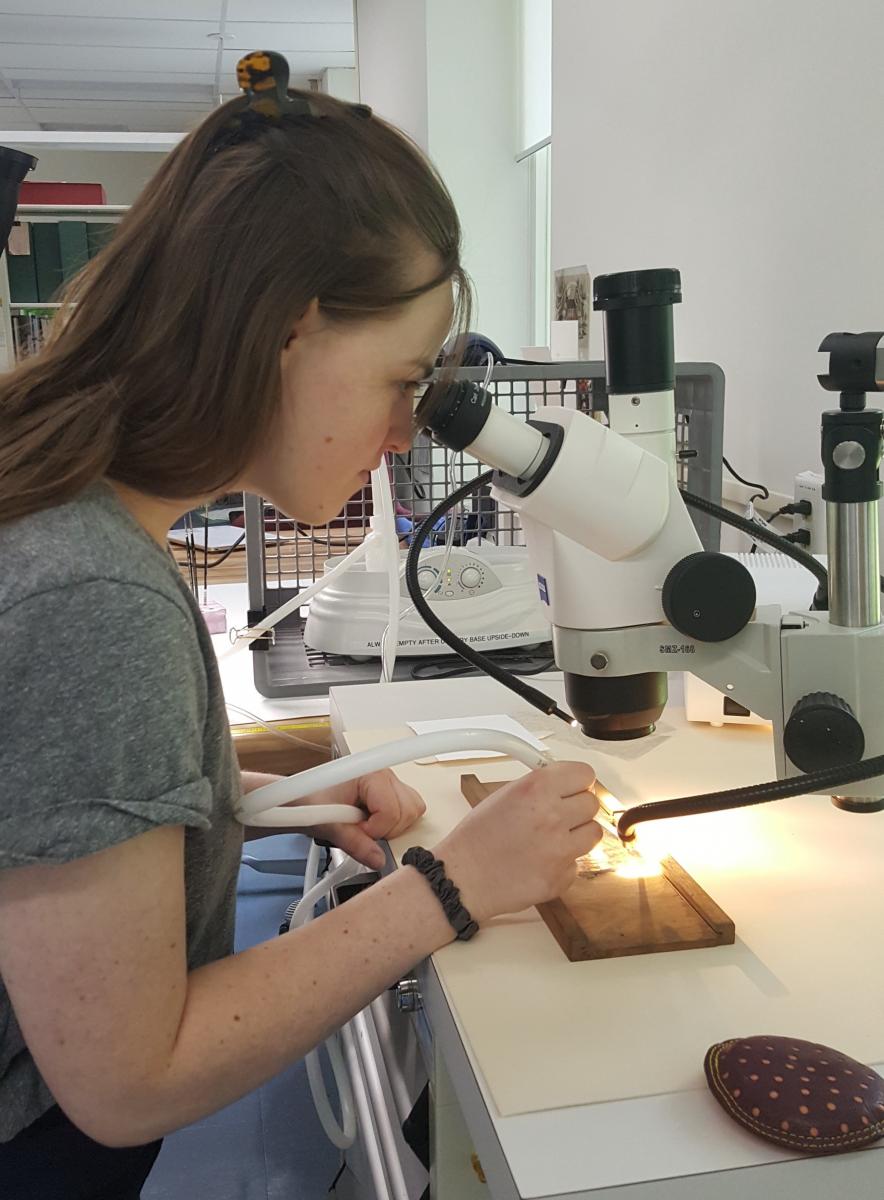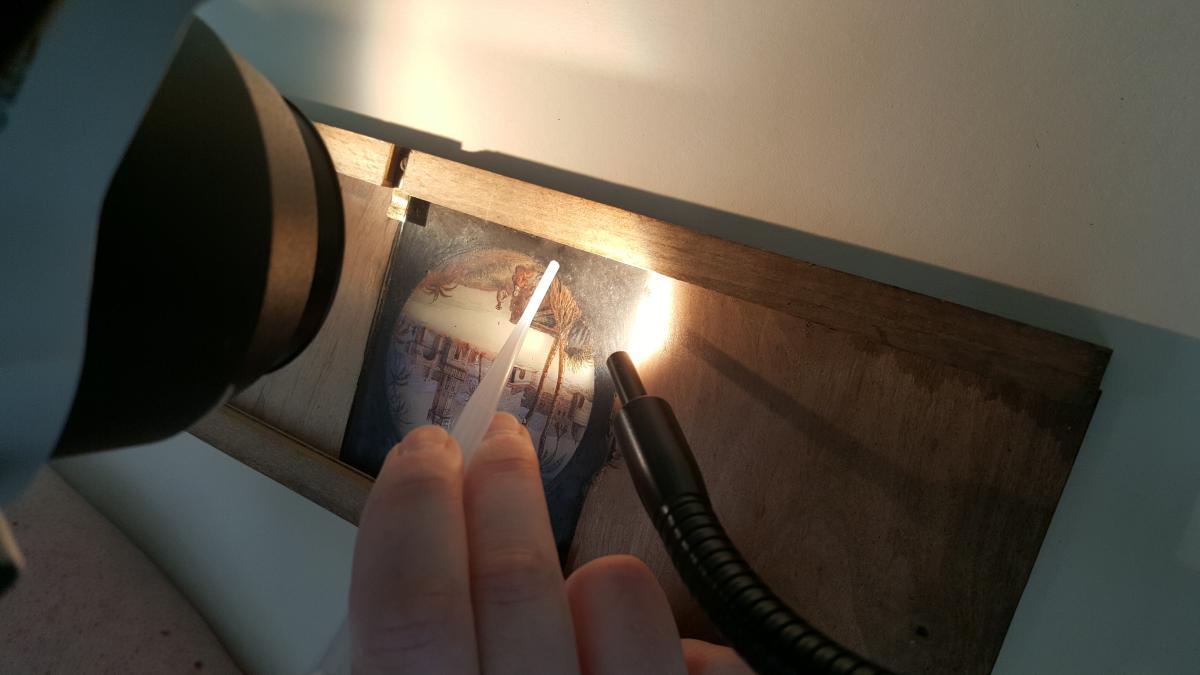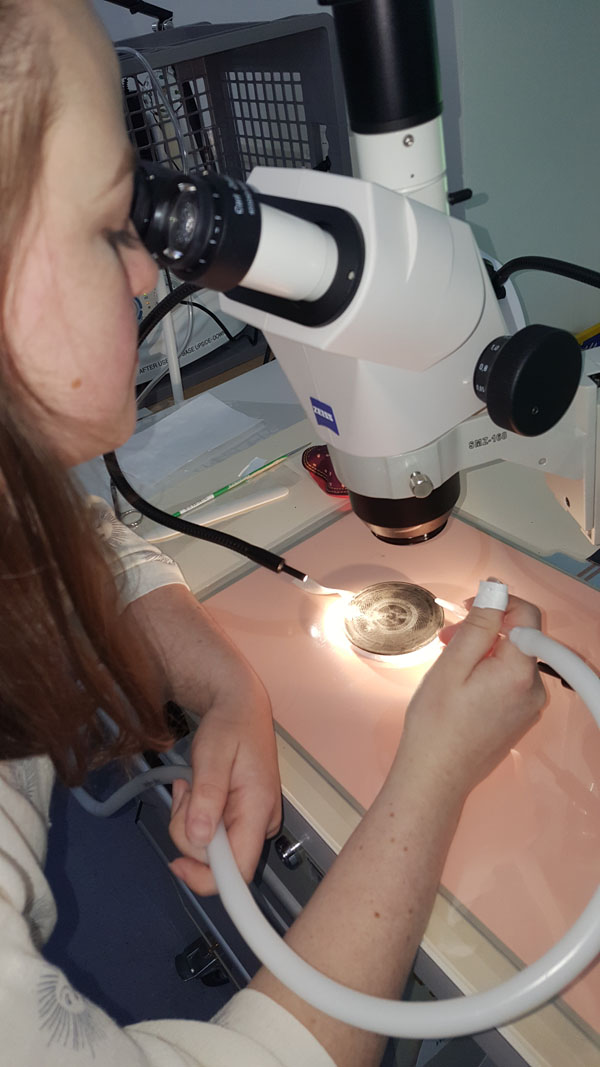Last month I described the first step in the conservation journey of our painted lantern slide scenes. This month I bring you the rest of the story. I previously described how grime and loose fibers were removed from the painted surface of our lantern slides. Here I will explain the stabilization of the flaking and lifting paint. To do this we had to adapt an ultrasonic humidifier and test different combinations of adhesive formulas and equipment alterations before we found success.

Consolidation is the act of applying an adhesive beneath or between flakes or cracks in media. The adhesive should have a gloss compatible with the media of the artwork. If the art is a matte paint, the conservator will avoid any shiny consolidants. The consolidant chosen must not yellow significantly, as it could cause perceptible color change as it ages. The consolidant may be applied by brush, spray, dropper, or mist.
For the painted lantern slides, a direct application by brush was not appropriate. The paint flakes were so miniscule that moving the brush nearby created a static charge that caused flakes to lift from the glass and become displaced or lost. The use of mist application also had to be gentle to prevent blowing paint flakes off the surface.
A professional aerosol generator machine looks like this. Unfortunately, we don’t have one at Hagley but we do have an ultrasonic humidifier and instructions for making our own aerosol generator. All we needed to make the adaptation was a small aquarium pump, some laboratory tubing, a hot glue gun, clamps and thread sealing Teflon tape. In Art Conservation it is often necessary to adapt equipment designed for other uses.

Making our aerosol generator was a bit more complicated than it might seem. Despite the warnings of difficulties described on art conservation forums, we ploughed ahead. It was a fickle project. The pump, which draws the mist through the tubing, had to raise above the water reservoir. The bottle holding the consolidant had to be a particular plastic that allowed transfer of the ultrasonic energy, or the mist would not form. The bottle also had to be suspended/floated in a particular way over the ultrasonic generator of the humidifier. We positioned and sealed the tubing and made a custom nozzle from a plastic dropper. Once the right mist-forming consolidant concentration was found, the application dropper end had to be monitored to prevent large liquid drops from forming and falling on the object surface. All the flake securing work was done using the microscope.

Solutions of gelatin and fish glues were tested. Both are traditional adhesives that prove to be sticky at very low concentrations of around 1 to 2%. In the end, the fish glue had a better adhesive quality at a lower concentration, and therefore was deliverable in a finer and more reliable mist.
Laura Wahl is the Library Conservator at Hagley Museum and Library.
